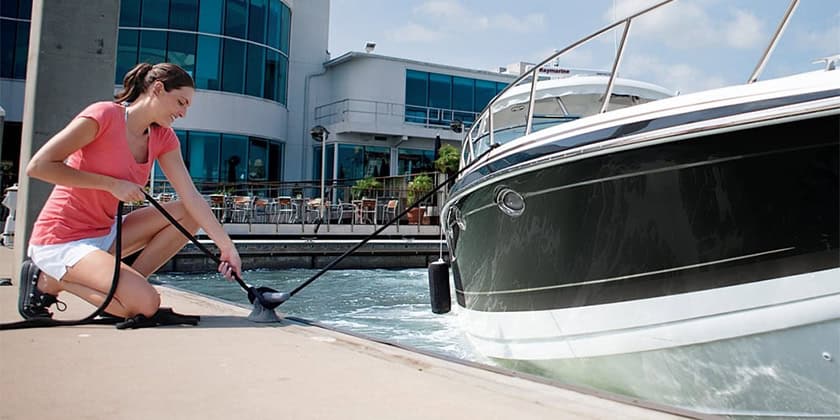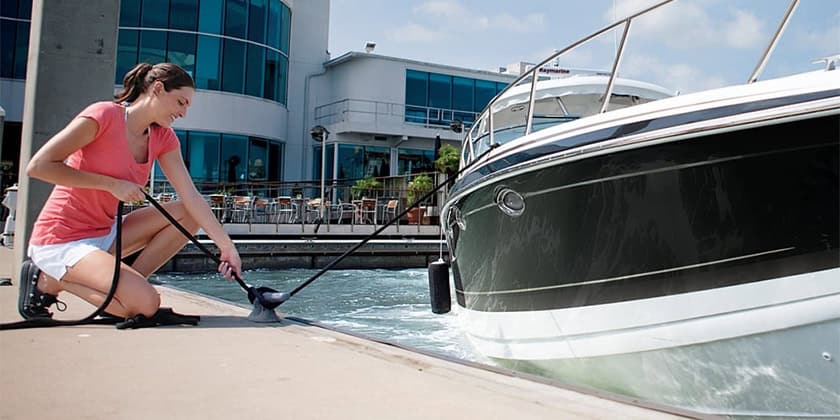
Seamanship: 10 Tips for Better Docking

Aug 22, 2024
No matter the size of the boat, the current or the wind, it’s close quarters maneuvering that takes the most gelcoat from boats. But it doesn’t have to be that way if you follow these simple rules.
1. Never approach a dock any faster than you want to hit it. Some captains like to hot-dog around, showing how efficiently they can shift and throttle, but even the best of them can be tripped up — either by misjudging distance, drift and vector, or by stalling their engines at shifting points, rendering the boat a helpless victim of its undirected momentum. A slow, steady approach is the sign of an experienced, steady skipper.
2. Never approach a docking situation without a plan. Perfect planning makes for perfect performance. It’s as simple as that.
3. Communicate your plan to your crew and clearly delegate any tasks you would have them perform. For instance, assign one passenger a bow line, another a stern or spring line. You might want to have other passengers hang fenders over the side at contact points to avoid scratching the boat. Assign these tasks and the order in which you want them done well in advance of the maneuver.
4. Warn your passengers to keep arms and legs inside the boat and away from pinch points between the boat and dock. To protect the boat in case of a harder-than-expected landing, have them suspend fenders at contact points.
5. Never allow a passenger to jump ship until the docking maneuver is complete and the boat is secure. The force of leaping off the boat can misdirect the boat’s motion, causing an accident, or can make the boat move away from the dock, lengthening the distance and leaving the offending passenger in the drink. At best it’s embarrassing; at worst it’s dangerous.
6. Never allow a passenger to serve as a fender, pushing against the dock to arrest forward motion. First, if you need that help, you’ve done a horrible job of docking. Second, rendering that help is extremely dangerous. Emergency rooms across the boating world have stories of missing fingers and broken arms from such mishaps. Gelcoat scratches are much easier and cheaper to fix.
7. When approaching a marina or club, use the VHF radio to talk to the dockmaster before entering port. Get directions to the best available mooring and let them know of any maneuvering limitations you might have. The larger the boat, the more important this is. You don’t want to enter a dead-end passage and have to back out or perform an unnecessary pivot in unfamiliar conditions.
8. It’s always best to approach a mooring against the current, if any, when possible. Always gauge the current as you come in, because its direction and momentum will determine your safest, most practical approach. A following current diminishes control; a strong beam current could even sweep a smaller vessel beneath the dock, capsizing it and putting the crew at risk.
9. Wind is the enemy of powerboaters and an unfriendly ally to sailors in port. Gauge its force and direction and determine whether you can use it or overcome it. For instance, docking beam-to a pier is pretty easy when the wind is pushing toward the pier. Give yourself an extra-wide safety margin and let the breeze push you against the pier.
10. There is only one skipper in a boat. You know who he is. No matter who is at the helm, the skipper is always responsible for his crew, so make sure you plan, prepare your crew and do so in a friendly, but firm and clear, way.
Source- Canadian Boating
